This Beginner Pilates Workout Will Improve Your Posture
Whoever you are and whatever you do, you’ll benefit from standing straighter
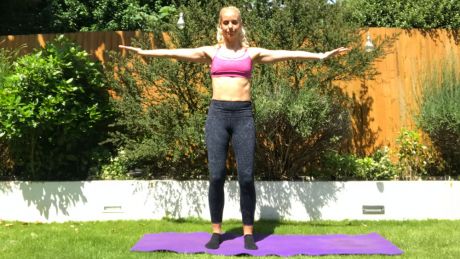
While there is no one thing you can do that will guarantee good health, there are some lifestyle changes that it would be wise for almost everyone to make. One is to eat more vegetables, another is to ensure you’re getting enough fibre and a third is to do some kind of activity to improve your posture.
The reason for the latter is correcting the damage done by the lengthy hours many of us spend hunched over a desk or a phone, but the benefits also extend to improved running form and a more stable base for weightlifting. And the really good news is that it doesn’t take a huge amount of work to improve your posture. This short and simple Pilates routine from sports physio Kim Saha done once or twice a week will work wonders.
Chest opener
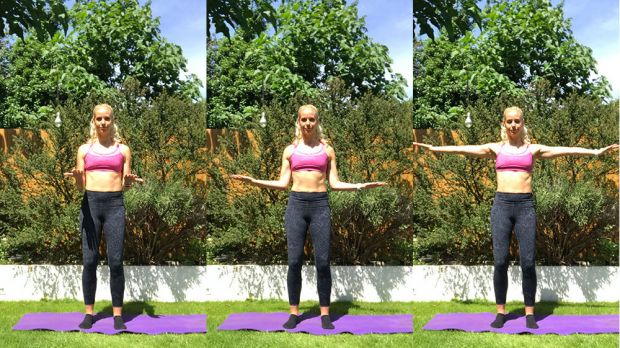
Reps 40
Why To correct tightness in the shoulders
How Stand with your feet hip-width apart, knees slightly bent, tailbone tucked in, lower abs drawn in and chest open. With your elbows tucked in to your torso, move your forearms out in front of you with your palms facing up. Keeping your elbows tucked, use your shoulders to rotate your hands out to the sides, then straighten your elbows to extend your arms until they’re perpendicular to the floor. As you straighten your elbows, stretch your fingertips out as far as possible. Reverse the moment to go back to the start position. This will feel like a big stretch through your arms and the muscles around your shoulder blades should be working hard. Work on keeping your shoulders down.
Crunch
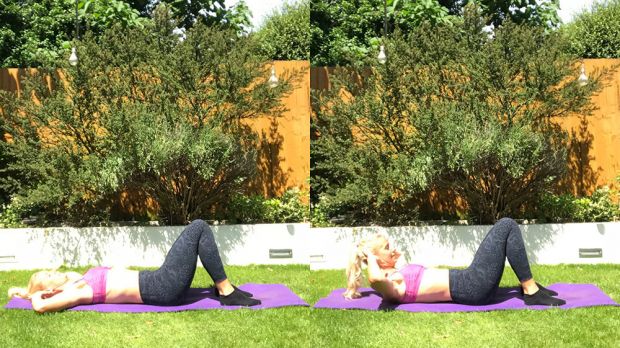
Reps 40
Why To flatten the abdominal area
Sign up for workout ideas, training advice, reviews of the latest gear and more.
How Lie on your back with your knees bent and feet on the floor, and your feet and knees hip-width apart. Arch your lower back slightly – just enough to slide your fingers under. Draw in your lower abs and keep the chest open. Put your hands behind your head. Raise your shoulders, without flattening your lower back, and draw your ribs towards your hips while still drawing in the lower abs. Lower back to the start.
Dead bug
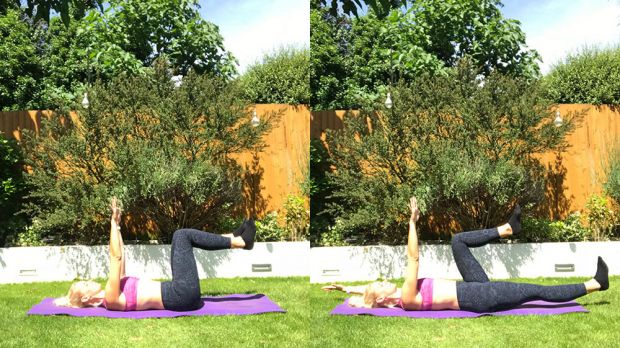
Reps 10 each side
Why To align the spine
How Lie on your back with your knees bent and hip-width apart. Lift your legs so your shins are parallel to the floor and extend both arms towards the ceiling. Lower one arm towards the floor behind your head and simultaneously stretch the opposite leg out. Return to the start position and repeat on the other side. Keep a small arch in your back – do not flatten or arch excessively.
Shoulder bridge
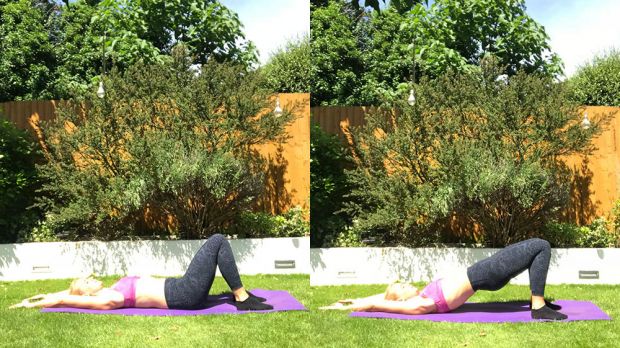
Reps 20
Why To loosen the spine and strengthen the glutes
How Lie on your back with your knees bent and feet on the floor. Bring your heels as close to your bottom as your legs will allow. Then flatten your lower back and, starting from the bottom of your spine, curl up, one vertebrae at a time, and lift your hips until you are balanced on your feet and shoulders only. Then lower back to the start.
Clam
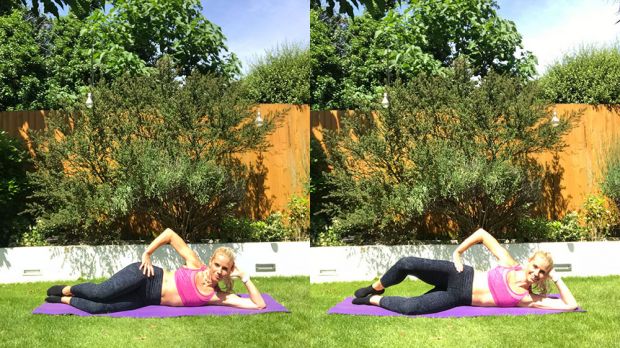
Reps 40 each side
Why To strengthen the glutes and align the hips
How Lie on your side with your knees bent and your feet in line with your hips and shoulders. Tuck the bottom of your hips back and roll the top of your hips forwards. Keeping your feet together, lift the top knee. Don’t worry about how far the knee rises, but be careful not to rock the top hip back. Then lower. You should feel the stretch in the side of your glutes.
Prone forward reach
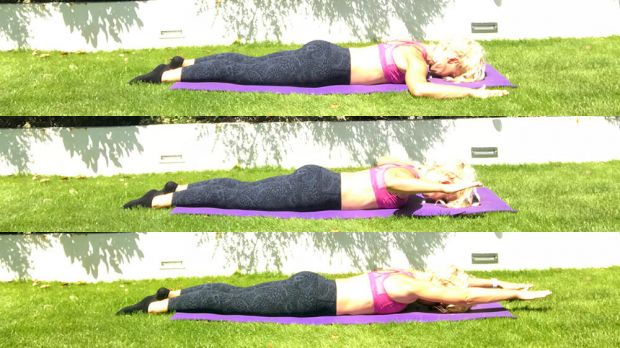
Reps 30
Aim To broaden the chest and pull the shoulders back
How Lie on your front with your forehead on the floor. Hold your arms out to the sides with elbows bent at 90°. Lift your arms off the floor slightly, stretch forwards with both arms, and then bring them back to the sides with your arms still hovering off the ground. Repeat the movement without letting your arms touch the floor.
For more Pilates workouts as well as physio advice, subscribe to Kim Saha’s YouTube channel

Nick Harris-Fry is a journalist who has been covering health and fitness since 2015. Nick is an avid runner, covering 70-110km a week, which gives him ample opportunity to test a wide range of running shoes and running gear. He is also the chief tester for fitness trackers and running watches, treadmills and exercise bikes, and workout headphones.
